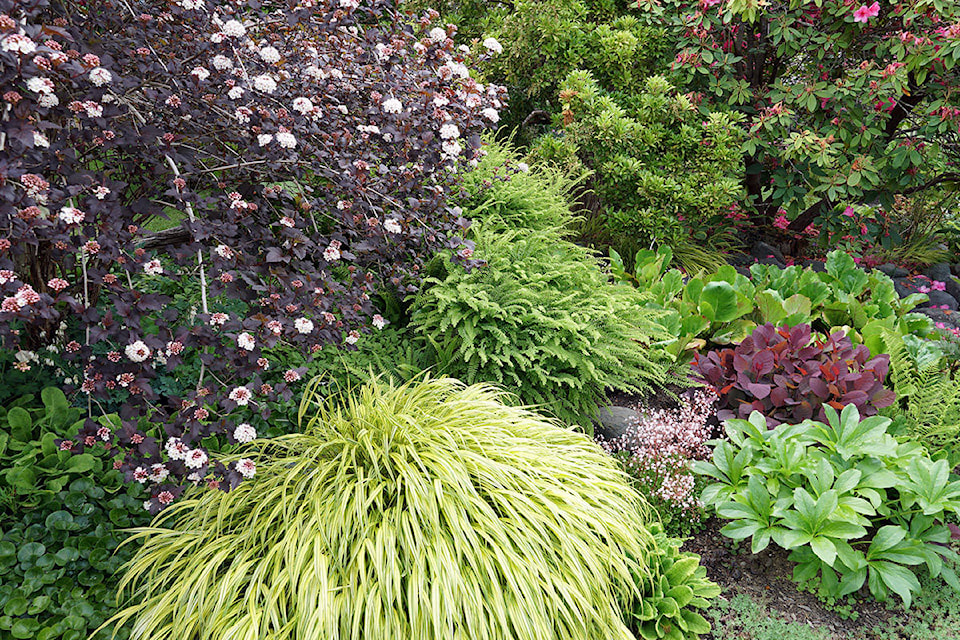LESLIE COX
Special to The Record
This time of year I start paying particular attention to which plants make a statement in the garden.
My criteria are: heat tolerance, low water tolerance, pest resistance, disease resistance, long season interest and maintenance intensity. (I love plants that look good with minimal work involved!)
I know I have mentioned a number of “standout” plants in past columns, so bear with me. A mention of one or two of them again here just means they are still impressing me as our garden is winding down its 21st season.
The following plants are not in any special order of “best” to “least best.” They are just in the order they were entered onto my list as I have walked around the garden, with a few additions from John.
So, not to keep you in suspense any longer… the first plant is Adiantum pedatum, common maidenhair fern. Anointed with the Royal Horticultural Society’s Award of Garden Merit in 1993, this delicate-looking, shade-loving fern gives full measure in each of my criteria categories, including tolerating minimum water.
But there is a bonus feature from the maidenhair. It will also thrive in full sun given our two patches have increased in size where some of the ferns are receiving a healthy dose of pure sunshine throughout the day. Granted, there is a bit of scorching on a few fronds. But only a few and they are easily snipped out without any loss of symmetry to the overall effect.
Moving on… Asarum europaeum, European wild ginger. Now, I do know I have mentioned this plant before but well worth yet another. This ginger species (not edible, by the way) is one which has been in our garden for about 15 years or more. The first plant took two to three years to establish a decent-sized presence in the garden bed. At least. But now it is established, it has happily extended itself to other parts of the garden, with the help of ants, of all things.
Ginger seeds have an elaiosome, a lipid-rich appendage, which attracts ants who carry the seed back to their nests. However, the elaiosome does not taste good and the ants wind up dropping the seeds. Thus, you have these shade-loving gingers sprouting up in full-on sunny parts of the garden. And thriving!
Sure, the bright green leaves do bleach out a bit but they do not scorch, which still makes these errant patches valid for the evergreen benefit in the winter garden. When spring rolls around again, it is an easy chore to cut all the old leaves off in order to appreciate the fresh new growth.
I should also mention: unwanted ginger seedlings are easily plucked.
The same reasons I mentioned for Asarum europaeum holds true for Hepatica nobilis, liverwort. Almost. This is another evergreen, spring-flowering plant. Easy to cut off all the old leaves in order to enjoy the brilliant blue flowers. Bloom-time is decently long. No pests or diseases of note and minimum water needs. Will also tolerate sun but only a few hours’ worth or the leaves will look quite stressed. I give this plant a tick because it presents its bright, cheery flowers on the heels of a long winter.
Room here for one more plant: Epimedium spp., bishop’s hat. Yet another evergreen plant with all of the same attributes as those noted previously. However, it has yet to be sun tested in our garden.
This species spreads outward by root so it is quite well-behaved. When it starts to over-step its allotted boundaries, it is very easy to divide. Cut leaves off to enjoy the delicate spring flowers.
Stay tuned. More plant species of note to come.
Leslie Cox co-owns Growing Concern Cottage Garden in Black Creek. Her website is at www.duchessofdirt.ca and her column appears in the Record throughout the spring and summer months.
